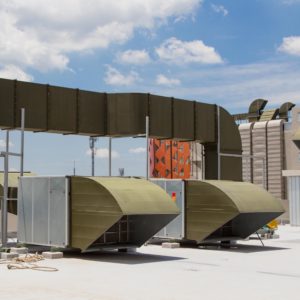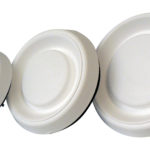 One of the most common complaints customers make about HVAC systems is the noise they generate. Sometimes it indicates a problem that needs fixing, such as a broken blower wheel or check valve, but most of the time it’s a result of normal operation.
One of the most common complaints customers make about HVAC systems is the noise they generate. Sometimes it indicates a problem that needs fixing, such as a broken blower wheel or check valve, but most of the time it’s a result of normal operation.
Business owners and commercial building managers are the most likely to grumble, as unwanted sound levels can directly impact their bottom-line. Office workers struggling to concentrate over the noise of a heating system isn’t good for business. Neither are loud air conditioning systems that keep hotel guests awake at night. The same goes for restaurants, conference centers, health care facilities, dormitories, and so on.
This presents a major opportunity that many HVAC specialists aren’t fully taking advantage of. With winter coming to a close soon, many customers will be more aware of their HVAC systems after a season spent indoors with these units running at full tilt.
It may have been a while since you brushed up on HVAC silencers, here are some high-level considerations to get you ready for your next consultation.
Location, location, location
When it comes to installing HVAC silencers, location is key. Multiple factors go into selecting the most effective spots, including the type of silencers being used, the location of the mechanical room, and how quiet the occupied spaces in the building need to be.
The main thing to keep in mind when you’re assessing the unique limitations and needs of the building is the concept of breakout noise. While most HVAC sound flows out of vents and registers, some sound also passes through the walls of ductwork. This is called breakout noise.
Breakout noise is important to keep in mind when installing HVAC silencers because, while you may dampen a lion’s share of the sound flowing through a wall register, there may still be unwanted breakout noise that flows into rooms. This is especially common if silencers are installed too far downstream from the main sound source.
If you fail to plan for breakout noise, you may find yourself with an unhappy customer after you install HVAC silencers.
Air pressure calculations are critical
The other big consideration that makes planning tricky is the relationship between noise control and air pressure. Most types of HVAC silencers contain baffles—acoustic media made up of millions of air pockets. When sound waves hit these air pockets, the molecules are bashed together and the energy is turned from sound to heat.
This effectively reduces noise but also creates a pressure drop in the airflow. The fans in any HVAC system create pressure, pushing the airstream forward. An obstruction in that airstream, such as the baffles in a silencer, produces back pressure and reduces the effectiveness of the fan pushing the airstream.
To keep the airflow moving, you need to balance the pressure drop allowed by the fan with the air resistance created by the silencer.
Planning is key
Installing HVAC silencers requires lots of prior planning tailored to the unique needs of the building, equipment, and occupants. Sound waves can travel in unexpected ways and the relationship between silencers, ductwork, and HVAC units can be complicated. Make sure you do your homework prior to beginning work, or you could end up only eliminating a small percentage of HVAC noise.



